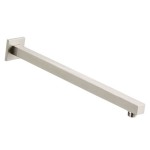Why Does Only One Of My Arms Swing When I Walk?
Understanding the essential factors contributing to why only one arm swings while walking is crucial for maintaining optimal movement and balance. Various physiological, neurological, and biomechanical aspects play a vital role in this phenomenon, and their thorough exploration is essential for addressing underlying causes and ensuring proper treatment.
This article will delve into the essential aspects of this condition, examining the underlying mechanisms and potential implications. By understanding the key factors, individuals can gain a comprehensive grasp of the causes and seek appropriate medical attention or self-management strategies if necessary.
1. Neurological Control:
The nervous system plays a central role in controlling arm swing during walking. The cerebellum, a brain region responsible for coordinating movement, initiates and modulates the alternating arm swing pattern. Damage to the cerebellum or its connections can disrupt this coordination, resulting in unilateral arm swing.
2. Proprioception:
Proprioception refers to the body's ability to sense its position and movement. Sensory nerves in the muscles, joints, and tendons provide constant feedback to the brain, enabling it to adjust movements accordingly. Impaired proprioception can confuse the brain's perception of arm position during walking, leading to asymmetric arm swing.
3. Muscle Strength and Tone:
Muscle strength and tone influence the ability to swing the arms during walking. Weakness or decreased tone in one arm can result in reduced swing amplitude or complete absence of movement. Underlying muscle conditions, such as muscle atrophy or spasticity, can affect arm swing symmetry.
4. Gait Mechanics:
Gait mechanics refer to the pattern of movements involved in walking. Abnormal gait patterns, such as limping or hemiparesis (weakness on one side of the body), can disrupt the natural arm swing rhythm. Impaired balance or coordination can also affect arm swing symmetry.
5. Compensatory Mechanisms:
In cases of unilateral arm swing, the body may develop compensatory mechanisms to maintain balance and stability. The swinging arm may exaggerate its movement to compensate for the lack of movement on the other side. This adaptation can lead to muscle fatigue or strain over time.
Conclusion:
Understanding the essential aspects of why only one arm swings while walking provides valuable insights into the underlying mechanisms and potential implications. By exploring the key factors, such as neurological control, proprioception, muscle strength, gait mechanics, and compensatory mechanisms, individuals can gain a comprehensive grasp of this condition and seek appropriate medical attention or self-management strategies to address the underlying causes and improve movement symmetry.

Why Do We Swing Our Arms When Walk Mental Floss

The Not So Strange Exercise Of Walking Backwards Works Clinic

What Might A Change In Arm Swing Mean For Someone Living With Parkinson S Davis Phinney Foundation

Swing Your Arms Like You Don T Care Futurism

Why Do We Swing Our Arms While Walking More S Aumsum Kids Science Education Children
Why Do Some People Walk Without Moving Their Arms Quora

Increasing Cognitive Load Attenuates Right Arm Swing In Healthy Human Walking Royal Society Open Science

How To Walk 5 Arm Swing Variations That Reveal Your Posture Persona And Potential Health Issues

Why Does Vladimir Putin Walk Like That

Power Walking What It Is How To Do Why S So Good For You








